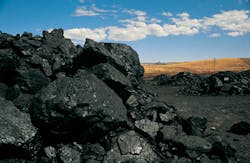Asia, Australia predicted to outperform US in coal bed methane production
The exploitation of unconventional natural gas reserves is becoming increasingly important globally amid fluctuating prices, schemes to reduce greenhouse gas emissions and a shift in balance on the world’s energy map. The shale gas revolution has allowed the United States to become largely energy-independent and has led to a boom in a number of other industries.
However, there is another opportunity that is still untapped in many countries, according to Resource Investing News — extracting coal bed methane (CBM). The technology to extract methane from coal was developed in the United States almost 40 years ago during a large-scale program for mine degasification and safety. At present, the country is the biggest producer of CBM in the world but there are still huge reserves to be exploited.
Some of the techniques typically used to extract shale gas through fracking are applied in CBM extraction as well, such as horizontal drilling and hydraulic fracturing. CBM production results in a significant amount of water as a byproduct, which needs to be pumped out of the well to reduce pressure and to allow the gas to escape.
RELATED: Can US coal bounce back?
According to Resource Investing News, CBM production is still only applied in isolated regions, depending on local geology and the region-specific prices in natural gas. Currently, CBM is being extracted from 15 basins in the United States, Canada, Australia, India and China. The total global production of the gas is about 5.8 billion cubic feet per day, with the U.S. share dominant at almost five billion cubic feet.
Experts believe that U.S. CBM production will fall in the long term due to expected depletion and maturity of resources on the one hand, and because of the low gas prices that restrict opportunities for new resource exploitation in North America, on the other. That is why industry specialists predict that the balance is likely to change, with Asia and Australia emerging as the most likely contestants for the leading position in CBM production. In Asia, prices of natural gas have maintained high levels and there is a strong drive to adopt more environmentally friendly methods of extracting fuels: factors that can boost CBM production in the long term.
The biggest Asian CBM producers are China and India, but their output at present is very modest, standing at 150 million and 10 million cubic feet per day respectively. However, CBM production in the Asia region is predicted to reach 98 billion cubic meters by 2020, with more than 60 percent of the increase expected from Australia. Overall, China holds CBM reserves of 36.8 trillion cubic meters, making it the third largest following Russia and Canada, China Daily revealed.
The implementation of strict air quality standards is another factor that can lead to an increase in CBM production. Standards relating to sulfur dioxide, particulate matter, nitrogen oxide and mercury make the majority of coal-fired power plants as expensive to run as plants powered by natural gas, Resource Investing News noted.
